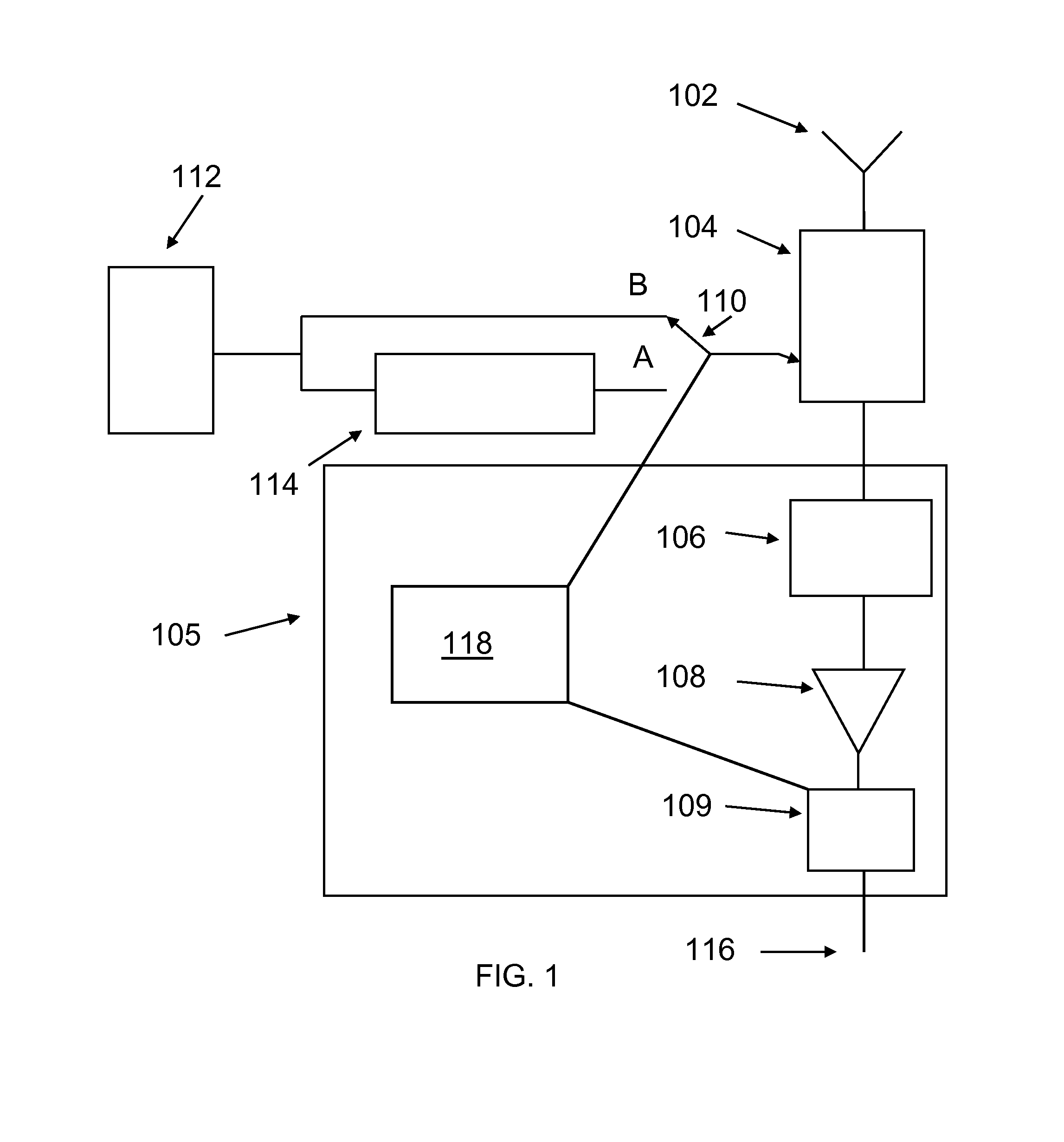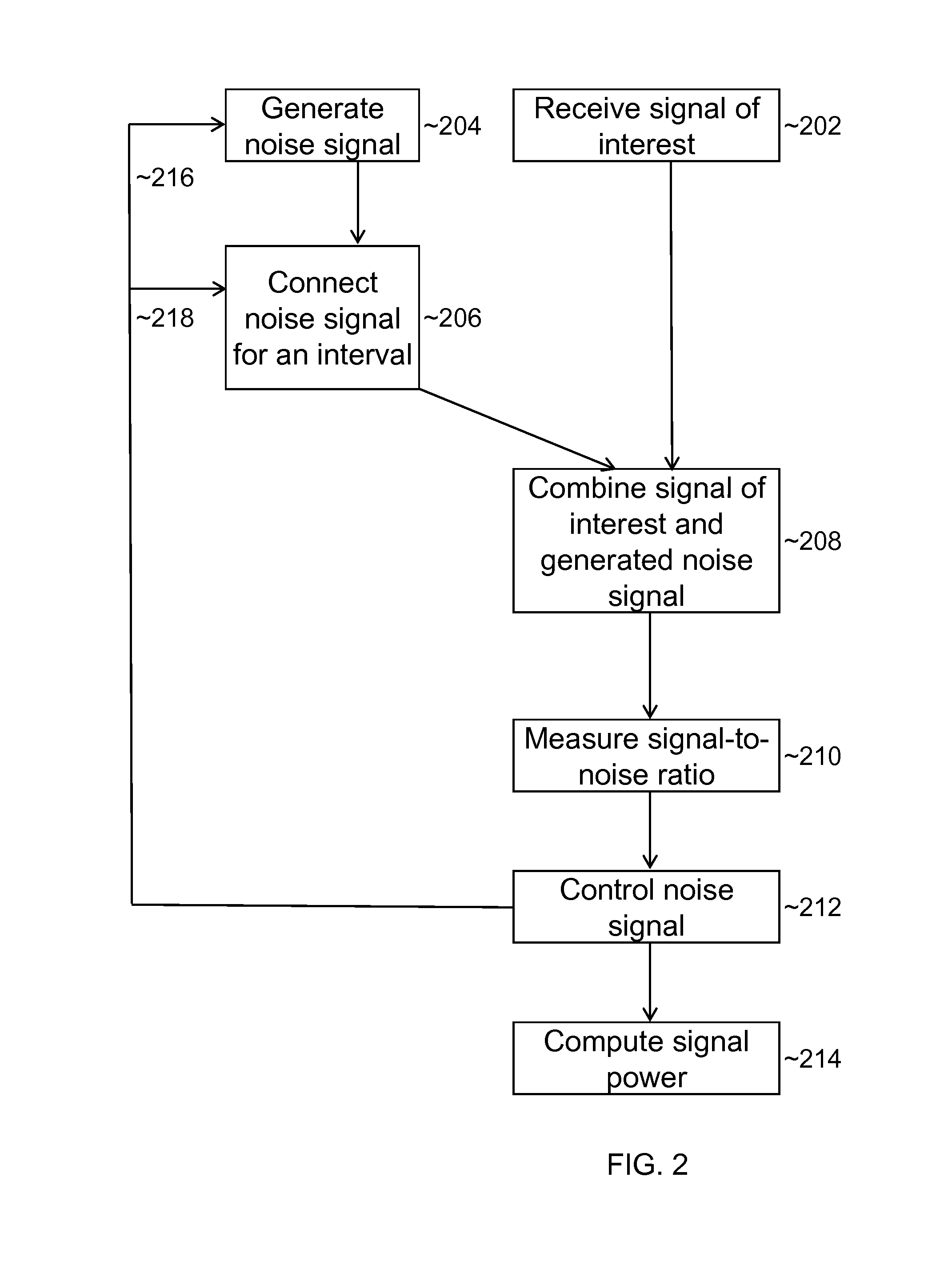Method to measure total noise temperature of a wireless receiver during operation
- Summary
- Abstract
- Description
- Claims
- Application Information
AI Technical Summary
Benefits of technology
Problems solved by technology
Method used
Image
Examples
Embodiment Construction
[0023]The current invention is uses measurements of the Signal to Noise Ratio (SNR), and changes in the SNR when calibrated noise levels are added, to continuously monitor a particularly useful portion of the noise while signals are actually being received and used.
Measurement of Total Noise Power Spectral Density
[0024]We describe a method to measure the total noise power in a GPS receiver, including contributions from the system temperature, the antenna temperature, interference, lossy components, and other noise sources. In order to monitor the health of GPS satellites, it is advantageous to be able to measure signal levels for each satellite that one observes. In order to determine the signal level, one needs the noise power in order to extract the signal power from the signal-to-noise ratio (SNR). In operation, when a GPS receiver receives a signal of interest, it is advantageous to be able to determine the power level of the signal. This can be accomplished if one can measure a...
PUM
 Login to View More
Login to View More Abstract
Description
Claims
Application Information
 Login to View More
Login to View More - R&D
- Intellectual Property
- Life Sciences
- Materials
- Tech Scout
- Unparalleled Data Quality
- Higher Quality Content
- 60% Fewer Hallucinations
Browse by: Latest US Patents, China's latest patents, Technical Efficacy Thesaurus, Application Domain, Technology Topic, Popular Technical Reports.
© 2025 PatSnap. All rights reserved.Legal|Privacy policy|Modern Slavery Act Transparency Statement|Sitemap|About US| Contact US: help@patsnap.com



